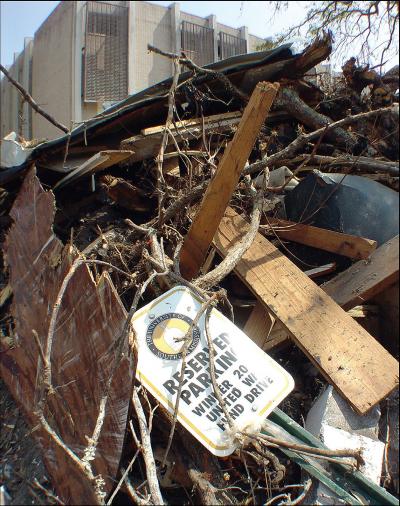Five Years Later, Southern Miss Points to Progress in Katrina Recovery
Thu, 08/26/2010 - 11:12am | By: David Tisdale

Hurricane Katrina, the Category 3storm considered the worst naturaldisaster in modern U.S. history, caused more than $200 million in damages toThe University of Southern Mississippi when it roared ashore Aug. 29, 2005.
It devastated the Southern Miss Gulf Park campus and other university research and teaching sites along the Mississippi coastline with 130-plus mile per hour winds and a storm surge estimated as high as 30 feet in areas, washing through the first floor of buildings and completely destroying others.
Five years later, the university continues making strong strides toward recovery, a reflection of the legacy of commitment by its employees, students, alumni and other stakeholders to come back stronger than ever.
“With the fifth anniversary of Hurricane Katrina approaching, Southern Miss Gulf Coast continues to look toward the future and the many opportunities that lie ahead for this university,” said Dr. Frances Lucas, vice president and campus executive officer for Southern Miss Gulf Coast.
Katrina remained a deadly force as she moved 75 miles north through the university's Hattiesburg campus with winds of more than 100 mph, necessitating more than $15 million in repairs and extensive debris removal. However, the Gulf Park campus in Long Beach and other teaching and research sites on the Mississippi Gulf Coast took the brunt of the hurricane.
In addition to structural damage, the university also incurred losses of research and equipment as well as tuition dollars, after approximately 1,000 students withdrew because of the hurricane's impact on them and their families. But through the efforts of dedicated faculty, staff and administrators, the fall 2005 semester moved forward on the Gulf Coast and in Hattiesburg after modifications were made to the academic schedule.
Southern Miss Gulf Coast was the only institution of higher learning in the hurricane-affected area that moved an entire campus to another site. The Gulf Park facilities were shifted from Long Beach to its temporary location at the Gulf Coast Student Service Center in the Pinion Healthmark facilities in Gulfport.
The Gulf Park campus sustained damage to every building. Prior to the storm, Gulf Park was comprised of 30 structures totaling just less than 290,000 square feet of space; following the storm, the campus had lost 13 buildings and 24,000 square feet to the storm, either destroyed and washed away or too severely damaged to salvage. Of the remaining 266,000 square feet, none was left untouched by the storm.
Now, five years later, nine of the remaining 17 buildings have been restored including the new library and classroom building, recently dedicated as the Horace W. Fleming Education Center; Barber Building; Holloway Complex; Business Complex; and the Physical Plant. In total, approximately 142,000 square feet have been restored.
A new Technology Learning Center has been constructed on the northern portion of the campus. A new Science Building, original slated for construction in the fall of 2005, has been re-sited on the northern portion of the campus and University officials expect construction on it to begin by spring 2011.
“Based on all of the restoration projects described above, we anticipate fully returning to the Gulf Park campus by fall 2012,” said Bryan Billings, director of planning, contracts and emergency preparedness at Southern Miss Gulf Coast.
The Gulf Coast Research Laboratory in Ocean Springs sustained heavy damage as well, and the restoration work continues at that site. Contracts have recently been awarded for the final restoration of two additional buildings, the Aquatic Wet Lab and the Shrimp Maturation Building. Planning for the replacement of the Hopkins Building is well underway. Other buildings are being replaced and relocated at Cedar Point.
“While we restore and enhance the Gulf Park campus, along with our other teaching and research sites on the coast, our students will continue to receive the highest quality education,” Lucas said.